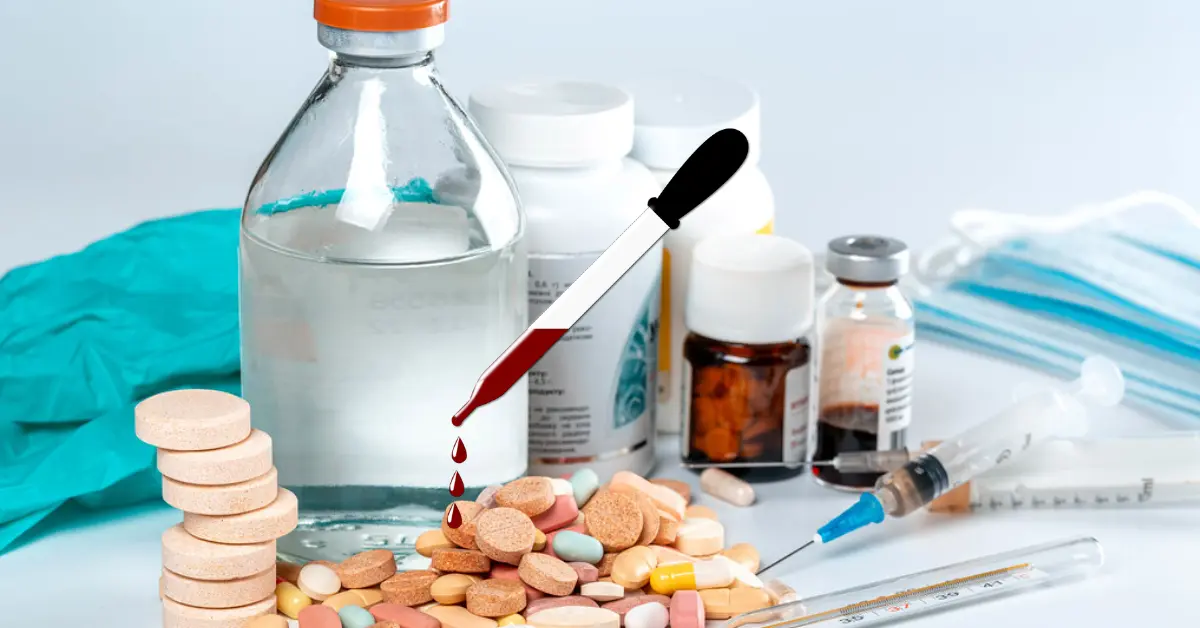How Many Drops in 1 mL: When it comes to taking medication or supplements, knowing the correct dosage is crucial. Most instructions will indicate how many milliliters (mL) of liquid should be consumed, but not everyone has a measuring device on hand. In these cases, it can be helpful to know how many drops are in 1 mL. In this article, we will explore the conversion of drops to milliliters and how to accurately measure dosage.
How Many Drops in 1 mL?
When measuring liquids, it’s important to use the appropriate tools for accurate measurement. This may include calibrated droppers, graduated cylinders, measuring cups, or spoons. Using the wrong tools or estimating measurements can result in inaccurate dosages or formulations.

Understanding the Basics of Drops and Milliliters
Before we dive into the conversion of drops to milliliters, it is important to understand what these terms mean. Drops refer to the volume of liquid that is delivered through a dropper or pipette. Milliliters, on the other hand, are a unit of measurement that represents the volume of liquid in a container. In most cases, milliliters are used to indicate the volume of medication or supplement that should be consumed.
The Standard Conversion of Drops to Milliliters
The standard conversion of drops to milliliters is 1 mL = 20 drops. This means that for every 1 mL of liquid, there are 20 drops. However, it is important to note that this conversion can vary based on the size of the dropper or pipette being used. Some droppers may only deliver 15 drops per mL, while others may deliver up to 25 drops per mL.
Calculating Dosage Conversion
Now that we understand the conversion rate, let’s explore how to calculate dosage conversion. Suppose you have a medication that requires a dosage of 0.5 mL. To determine the number of drops you need, you can use the following equation:
Number of Drops = Volume in mL x Conversion Rate
Substituting the values in the equation, we get:
Number of Drops = 0.5 mL x 20 Drops/mL
Number of Drops = 10 Drops
Therefore, to get a dosage of 0.5 mL, you need ten drops of the medication.
Converting Drops to mL and mL to Drops
Converting drops to mL and mL to drops can be done using the following formulas:
- To convert drops to mL: divide the number of drops by 20
- To convert mL to drops: multiply the number of mL by 20
It’s important to note that these formulas are based on the assumption that there are 20 drops in 1 mL.
Read – The 1 cosx Formula: Understanding Trigonometric Identities
Factors That Can Affect the Conversion
While the standard conversion of drops to milliliters is 1 mL = 20 drops, there are several factors that can affect this conversion. These factors include:
The viscosity of the Liquid
The viscosity, or thickness, of the liquid, can affect the size of the drops and therefore the conversion of drops to milliliters. Thicker liquids may produce larger drops, resulting in a lower number of drops per mL.
Size of the Dropper
The size of the dropper can also affect the conversion of drops to milliliters. A larger dropper may produce more drops per mL, while a smaller dropper may produce fewer drops per mL.
The angle of the Dropper
The angle at which the dropper is held can also affect the size of the drops and therefore the conversion of drops to milliliters. Holding the dropper at a steeper angle may result in smaller drops, while holding the dropper at a shallower angle may result in larger drops.
Tips for Measuring Liquid Medication
Here are some tips to help ensure accurate measurement of liquid medication:
Use a Calibrated Dropper
Using a dropper that is calibrated for the specific medication being administered can help ensure accurate measurement. These droppers are typically provided with the medication and are marked with the appropriate dose.
Hold the Dropper Vertically
Holding the dropper vertically can help ensure that the drops are dispensed consistently and accurately.
Count the Drops Carefully
When measuring medication, it is important to count the drops carefully to ensure that the correct dosage is administered.
Use a Clean Dropper
Using a clean dropper can help prevent contamination of the medication and ensure accurate measurement.
Conclusion
In conclusion, the number of drops in 1 ml can vary depending on a number of factors, such as the type of liquid, dropper size and shape, and user technique. While a general rule of thumb is that there are 20 drops in 1 ml, it is important to be mindful of these factors and adjust your technique accordingly when measuring liquid medication. By following the tips provided in this guide, you can help ensure accurate measurement of liquid medication and promote better health outcomes.
FAQs
Is there a standard size for droppers?
No, dropper sizes can vary depending on the product.
Can the number of drops in 1 ml vary between different brands of medication?
Yes, the number of drops in 1 ml can vary between different brands of medication. It is important to follow the dosage guidelines provided by a healthcare professional and to use a calibrated dropper when measuring medication.
Can you convert drops to teaspoons or tablespoons?
Yes, you can convert drops to teaspoons or tablespoons. However, this conversion will depend on the liquid’s density and viscosity.
Can I use a kitchen teaspoon to measure liquids?
It is not recommended to use a kitchen teaspoon to measure liquids, as this can result in inaccurate measurements.
What should I do if I do not have a calibrated dropper?
If you do not have a calibrated dropper, you can estimate the size of the drops by counting the number of drops needed to fill a known volume, such as a teaspoon or a graduated cylinder. However, this method is less accurate than using a calibrated dropper.

Would love to always get updated outstanding website! .